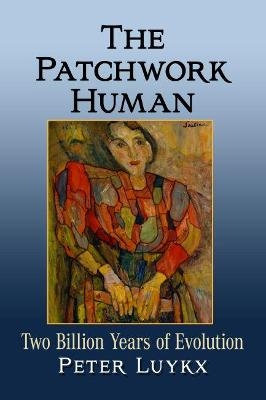
The Patchwork Human
McFarland & Co Inc (Verlag)
978-1-4766-8612-7 (ISBN)
Life began about four billion years ago on our planet. Like an old patchwork quilt, evolution stitched the human being together from parts of ancient species now long extinct. Like any species, humans have hundreds or even thousands of traits that have been passed down through time. The evolutionary age of our different traits can be told from how widely distributed they are among today's living creatures.
The book aims to explain some human traits and how we--as social, sexual, language-obsessed technological apes--evolved into our own modern species. Combining hard science with philosophical thought, this work aims to explain where humans have come from, and where we are going. Free of complicated jargon, it breaks down the concept of evolution starting with the human body's most basic component--our cells. Building from there, chapters explore which traits became inherited over evolutionary time, ultimately projecting what could be next for our species.
Peter Luykx, professor emeritus in the biology department at the University of Miami, Florida, has published research in genetics, cell biology, and evolution, and has taught and written for the non-scientist in those areas. He lives in Miami.
Table of Contents
Acknowledgments
Preface
Introduction: The Patchwork Human, Old and New Parts
1. The Human Machine
What Do People Think?
People versus Machines
Mind, Spirit, Soul
Matter
2. Cells, Genes, and Other Small Parts
Cells
Molecules Small and Large
Chromosomes, Genes, and Proteins
3. The Embryo: Construction and Continuity
Early Development
Continuity
4. Evolution: The Process
The Process of Evolution
Evolutionary Mechanisms
Adaptation and the Randomness and Purposelessness of Evolution
“For the good of the species”
Are We Still Evolving?
5. Evolution: The Pattern
Darwin’s Tree
Evolutionary Genetics
Fossils
The Genus Homo and Its Ancestors
Sea Urchin Interview
6. Bigger Is Sometimes Better
7. Bilateral Symmetry
8. The Sexy Beast, Part I
The Biological Basics of Sex
Sperm and Egg Logic
The Mating Dance: The Logic of Fidelity and Promiscuity
9. Up the Mammalian Path
Origins
Mammary Glands and Milk
The Placenta
10. Fur
Hair Today, Gone Tomorrow
11. A Warm-Blooded Animal
Mechanisms
Evolution
12. Upright Living
Forelimbs and Hind Limbs
Fossil Evidence
13. The Brain
Brain Development and Structure
Some Comparisons
Aspects of Brain Evolution
Brain Function
14. The Sexy Beast, Part II
The Penis and the Vagina
External Testes
How Human Brain Size Influences the Mating System
Conspicuous Mammary Glands
Sex and Pleasure
Ovulation Now?
Monogamous or Polygamous?
Menopause
15. On Being Social
Basic Elements of Being Social
Teaching and Learning
Cooperation
Altruism
Mind-Reading, or Perspective-Taking
Evolutionary Origins of Sociality
16. The Truly Musical Animal
When?
How? The Muses Weigh In
As Part of Our Biology, Why Music?
17. The Talkative Ape
The Anatomy of Speech and Language
Features of Human Language
Precursors of Language in Animal Communications?
An Evolutionary Pathway for Language
18. Human Races, Real and Imagined
The Concept of Race
The Evolution of Human Races
Racial Prejudice
In Summary
19. The Future of the Only Remaining Human Species
Homo sapiens Forever
A New Species of Homo?
Extinction Once and For All
Slow Extinction by Climate Change
Appendix I: Tissues, Systems, Organs, and Cell Types
Appendix II: Some Musical Preferences
Background and Further Reading
Index
| Erscheinungsdatum | 31.01.2022 |
|---|---|
| Zusatzinfo | 67 photos, appendices, bibliography, index |
| Verlagsort | Jefferson, NC |
| Sprache | englisch |
| Maße | 152 x 229 mm |
| Gewicht | 399 g |
| Themenwelt | Geschichte ► Teilgebiete der Geschichte ► Kulturgeschichte |
| Naturwissenschaften ► Biologie ► Evolution | |
| Sozialwissenschaften ► Ethnologie | |
| Sozialwissenschaften ► Soziologie | |
| ISBN-10 | 1-4766-8612-2 / 1476686122 |
| ISBN-13 | 978-1-4766-8612-7 / 9781476686127 |
| Zustand | Neuware |
| Informationen gemäß Produktsicherheitsverordnung (GPSR) | |
| Haben Sie eine Frage zum Produkt? |
aus dem Bereich


